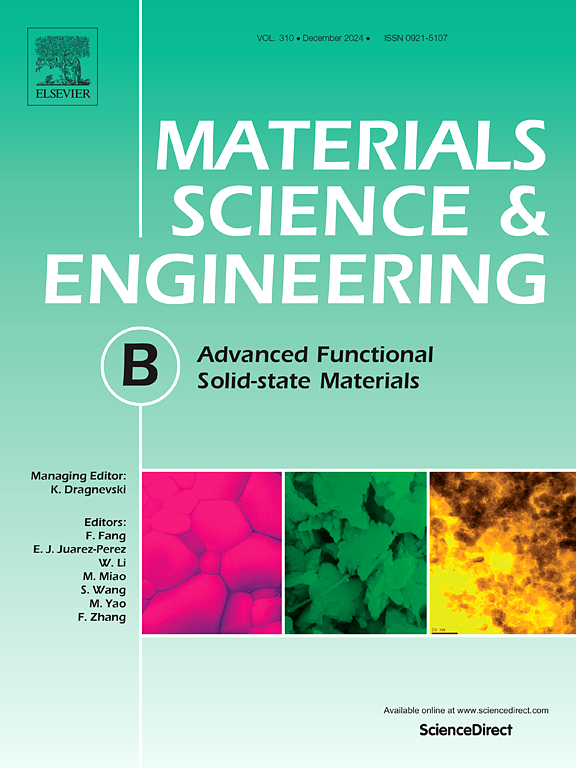Rare-earth metal-doped orange emissive photoluminescent carbon quantum dots for highly sensitive detection of Hg2+ ions: Multi-color imaging and real samples
IF 3.9
3区 材料科学
Q2 MATERIALS SCIENCE, MULTIDISCIPLINARY
引用次数: 0
Abstract
A novel praseodymium (Pr3+)-doped carbon quantum dots (Pr-CQDs) were synthesized through a solvothermal process using citric acid, glutathione and praseodymium as a precursors. The Pr3+ ions were effectively coordinated with the carboxylate groups present on the surface of the CQDs and became integrated into the nano-graphene structure within the carbon core. The Pr-CQDs were sensibly analyzed through several spectroscopic and microscopic techniques, including UV–Vis, photoluminescence (PL), FT-IR spectroscopy, XRD, TEM, and XPS. These Pr-CQDs displayed excellent PL properties, emitting a distinct orange light at 575 nm when excited at 400 nm, achieving a quantum yield of 39.18 %. Morphological investigations showed that the Pr-CQDs were spherical in shape, well-dispersed, and had an average size of 4.94 ± 1.1 nm. Additionally, they exhibited stable PL across a broad pH range and in solutions with varying ionic strengths, demonstrating their robustness under different environmental conditions. When tested as optical sensors, The PL properties of Pr-CQDs displayed remarkable selectivity toward Hg2+ ions, which caused significant PL quenching, while other metal ions produced negligible responses. A linear relationship was established between the PL intensity and the concentration of Hg2+ ions (0–10 μM), with the sensor showing a detection limit as low as 90.3 nM, indicating high sensitivity. In addition, the biocompatibility of the Pr-CQDs were successfully used to multi-color image live cells as confirmed by a water-soluble tetrazolium salt (WST) assay, supporting their potential for use in biomedical applications. Moreover, the practical application, the Hg2+ ions was effectively measured using a spike and recovery method with real water samples.

求助全文
约1分钟内获得全文
求助全文
来源期刊

Materials Science and Engineering: B
工程技术-材料科学:综合
CiteScore
5.60
自引率
2.80%
发文量
481
审稿时长
3.5 months
期刊介绍:
The journal provides an international medium for the publication of theoretical and experimental studies and reviews related to the electronic, electrochemical, ionic, magnetic, optical, and biosensing properties of solid state materials in bulk, thin film and particulate forms. Papers dealing with synthesis, processing, characterization, structure, physical properties and computational aspects of nano-crystalline, crystalline, amorphous and glassy forms of ceramics, semiconductors, layered insertion compounds, low-dimensional compounds and systems, fast-ion conductors, polymers and dielectrics are viewed as suitable for publication. Articles focused on nano-structured aspects of these advanced solid-state materials will also be considered suitable.
 求助内容:
求助内容: 应助结果提醒方式:
应助结果提醒方式:


